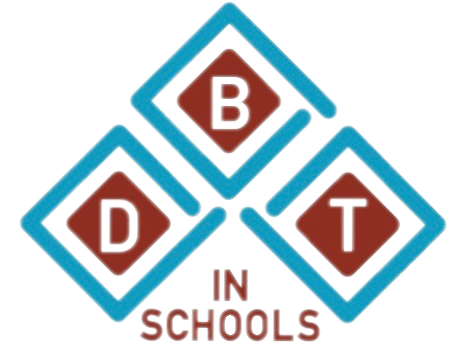Meet Students Where They Are: Building Emotional Learning from the Start
If we want children to handle big emotions in healthy ways, we have to start where they are — not where we wish they were.
That’s the philosophy behind DBT STEPS-E, the new elementary-school adaptation of DBT STEPS-A. The skills are the same, like mindfulness, distress tolerance, emotion regulation, and interpersonal effectiveness. The delivery is much different. Each lesson matches how children actually think, feel, and learn.
Why “Meeting Students Where They Are” Matters
Picture a kindergartener who bursts into tears because their tower of blocks just fell. To them, that moment feels enormous. Expecting logic or “use your words” before calming their body isn’t realistic; the brain is in full fight-or-flight mode.
In STEPS-E, we begin with the body. Students learn CAP (Cold water, Activity, Paced breathing) a developmentally appropriate version of the adolescent TIP skill. By cooling down, moving, and breathing, they regulate physiology first so the brain can follow.
As children grow, CAP evolves into TIP, and emotion regulation becomes a practiced habit rather than a new idea introduced in middle school.
From “Don’t Make It Worse Skills” to Distress Tolerance
Younger students aren’t ready for words like distress tolerance. Instead, they learn “Don’t Make It Worse Skills.” A simple reminder that teaches younger students to “Take a breath before reacting” with practice becomes a lifelong pattern of pausing instead of exploding, asking for help instead of giving up.
By grades 3–5, that concept expands into SEA and SEAT:
S – Senses: use the five senses to ground in the moment
E – Emotions: notice and name what you’re feeling
A – Activity: move your body or do something helpful
T – Thoughts: choose one thought that helps, not hurts
Each stage builds readiness for the next. When children reach STEPS-A, they already recognize the structure of the skills — they’ve been rehearsing it for years.
In the Classroom and at Home
In classrooms, STEPS-E lessons weave emotional learning into everyday routines: a quick CAP break after recess, a breathing exercise before tests, or a teacher modeling validation after conflict (“You’re frustrated; that makes sense. Let’s calm down first.”).
At home, parents reinforce those same lessons by practicing alongside their children, turning meltdowns into moments of connection: “Let’s get some cool water together and shake out that big feeling.”
When both settings use the same language and skills, emotional regulation becomes consistent, predictable, and safe.
Early Skills, Lifelong Impact
Research consistently shows that early emotional education predicts better academic performance, healthier relationships, and lower behavioral issues later on. DBT STEPS-E provides a framework for teaching those skills before emotional dysregulation becomes entrenched.
By meeting students where they are, we set them up for where they’re going.
Watch the Full Lesson
Watch Dr. Wellbeing’s full “Meet Students Where They Are” video on YouTube to see how these skills come to life in the classroom.
Learn more about the DBT STEPS-E curriculum, now available for preorder on Amazon or as part of the STEPS-A + E bundle from Guilford Press.
